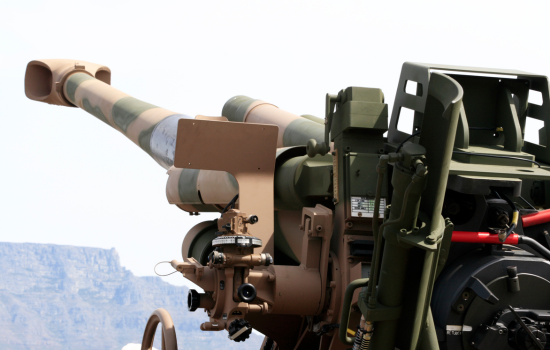The New York Bomb Plot
The 2 May 2010 attempted detonation of a car bomb in New York City, United States, should be considered as another near miss incident on the United States’ terror radar. Initial reports have indicated that the Sports Utility Vehicle, a Nissan Pathfinder, was filled with three propane tanks, fireworks, two filled 5-gallon gasoline containers, and two clocks with batteries, electrical wire and other components, according to officials. NY Police Commissioner Ray Kelly added that 100 pounds of fertilizer were also found in a rifle cabinet; however the fertilizer was not volatile enough to explode.
The last time a fertilizer based VBIED (Vehicle Borne Improvised Explosive Device) was used in the United States, was during the Oklahoma City bombing which targeted the Federal Building in the city. The 1993 World Trade Center Bombing in New York also involved the primary use of fertilizer based explosive devices, with hydrogen gas tanks for secondary explosions.
A brief preliminary analysis of the information at hand clearly indicates a potential terror attack, despite the supposed “rudimentary” nature of the bomb. The only factor which came into play which would meant the difference between a serious incident and a lower intensity incident, was that the bomb malfunctioned. Eyewitness accounts state the car was starting to billow smoke, and while the initial trigger mechanism began, it soon fizzled out. It can be speculated that the “pop-pop-pop” sounds heard by the eyewitness were the small over the counter fireworks which were detonated as a result of the initial flames.
Special mention of Duane Jackson is needed, for by observing and reporting the suspicious vehicle, he allowed the authorities to move in immediately. It is another reminder on how everyday civilians can play a pivotal role. It is important to highlight the case of Jackson and others like him in Public Service Announcements, as key efforts to counter-terrorist actions.
London Car Bomb Plots: The Similarities
The bomb plot is eerily similar to the failed car bombing attempts at London in 2007. The incidents in June 2007, involved two cars filled with petrol, gas cylinders and nails. The cars did not suffer from a malfunction, but were detected and the bombs disabled. As in the New York incident, the vital role of the alert public helped avert a major catastrophe. In the first incident, an ambulance rushing towards a night club to tend to a patron noticed a suspiciously parked car near the club, which was billowing smoke. Authorities were called in and they immediately cordoned off the area and prevented the device from detonating.
In the second incident, the car which was illegally parked was towed away, and the staff at the car park, suspicious of the strong smell of petrol from the car, combined with knowledge that a car bomb had been detected earlier, informed the police who swiftly moved in to investigate and disable the bomb. Reports have indicated that the London car bombs were to be detonated by mobile phones. It would be interesting to learn more about the trigger mechanism for the New York bomb plots.
Why New York City?
The United States remains a prized target destination for terrorist plots. Within the U.S., New York has been high on the terror radar for a number of years. New York City offers the quintessential American identity, from its financial nerve centers, multi-culturalism, sports centers such as the world’s most famous arena- Madison Square Garden and home to the symbol of American liberty- The statue of Liberty. Furthermore, the city is also home to the United Nations headquarters, which makes it an attractive location for international media outlets, and therefore even more viable to terrorist groups intending to take advantage of the international coverage an attack on New York offers. In totality, New York offers what is described in counter-terrorism parlance as a plethora of “Iconic Targets” which would be high on the terrorist radar scene.
In recent years, the terror threat against New York has been significantly higher. The city has been on a high state of alert since the September 11 attacks, and a number of foiled incidents since then have furthered fears of a successful attack by terrorists. On 30 April 2010, Wesam El-Hanafi and Sabirhan Hasanoff, both U.S. citizens, were indicted for allegedly conspiring to provide computer advice and assistance, services and currency to al Qaeda. They were both residents of New York.
Interestingly, responding to a query over a possible link to an imminent terror attack, NYPD commissioner Ray Kelly acknowledged that the two were undertaking certain tasks and chores for al-Qaeda while in New York, but downplayed any terror threat.
New York’s subway system has been repeatedly focused upon in briefings by counter-terrorism agencies. Zarein Ahmedzay, Adis Medunjanin and Najibullah Zazi were indicted by the US Justice Department on charges to “conduct coordinated suicide bombings” against the New York’s subway system in September 2009. The most serious of terror plots, targeted against the United States at the time. Ahmedzay pleaded guilty in April 2010. Threats against the subway system were also raised in September 2008, and November 2008. Furthermore, New York City in 2009 has also charged terror suspects with plotting to bomb two synagogues in Bronx and to use antiaircraft missiles to shoot down planes at a military base in Newburgh, N.Y., 60 miles north of New York City.
The most significant of terror trials in the United States is potentially to be hosted in New York. The trial of the mastermind of the September 11 attacks- Khaled Shaikh Mohammad is scheduled to take place in a court room in downtown Manhattan. The location of the trial has been opposed to by many senior administration officials owing to security considerations surrounding such a trial. The expected trial has even led to an audio taped message from Osama Bin Laden that a death sentence to Mohammad would lead to renewed threats against Americans, and the execution of Americans captured by the group.
Who is responsible for the latest terror attempt?
It is very early to conclusively name prime suspects in the plot. The day after the incident, a Pakistani-American Faisal Shahzad was arrested at John F. Kennedy International Airport in New York, while boarding a flight to Dubai. It is suspected that he spent time in Waziristan region of Pakistan, which is a known hotbed of extremism, including the base of operations of the Tehreek I Taliban. Immediate connections between him and the bombing plot are sketchy. As this remains a crucial time juncture, only speculations as to the perpetuators can be provided.
The Pakistan based Tehreek-i-Taliban (TTP) led by Hakimullah Mehsud had taken responsibility for the car bomb, while then distancing itself from the claim. The group is known to be opportunistic in its claims, and does not necessarily have the capabilities to launch attacks beyond its operating zone. The TTP has had some credible successes against American interests in the region including the Khost suicide bombing which killed a number of CIA officials in Afghanistan. The last attack on American soil claimed by the TTP was the April 2009 shooting in a U.S. immigration center in New York, which has since been dismissed by investigators. The TTP had claimed the New York bomb plot as revenge for the deaths of senior Al-Qaeda functionaries in Iraq. Abu Omar al-Baghdadi and Abu Hamza al-Muhajir, also known as Abu Ayyub al-Masri. Masri took over the reigns of Al-Qaeda in Iraq after the death of Abu Musab Zarqawi was killed a little over a week ago by American forces in Tikrit. His death was seen as a major victory by the Iraqi and American governments, with a special press briefing being called for the occasion.
Alternatively, the similarities between the London car bombs and the New York bomb plot lend credence to speculation that Al-Qaeda affiliated groups may have been behind the attack. One of the perpetuators of the London bombing plot, Bilal Abdulla (the co-passenger in the Glasgow airport attack), had purportedly met senior Iraq based Al-Qaeda leaders. A letter found in his laptop was a dedication to Abu Omar al-Baghdadi and Abu Hamza al-Muhajir.
The last major terrorist attack both successful and foiled against American interests were traced back to Imam Anwar al-Awlaki, a Yemen based American scholar, with leadership in the Al-Qaeda in the Arab Peninsula (AQAP). In addition to the shooting incident involving Major Hasan Nidal, another shooting outside an Arkansas military recruitment center, is believed to have linkages to AQAP. In addition, the failed Detroit airplane bombing plot has further indicated the resourcefulness of AQAP. However, it might also be entirely plausible that Al-Qaeda central may have been behind the plot, re-activating sleeper cells long believed to be in the United States. As is well documented, Al-Qaeda is known to revisit its targets, including the second attempt at the World Trade Center and repeated attempts to blow up airplanes since. New York remains a iconic target for terrorists, and particularly so for Al-Qaeda.
Rumors suggest that the bomb plot may have been an intended message for Media mogul Viacom, whose offices are located in the vicinity. Viacom owns Comedy Central; a cable channel hosts the controversial animated show “South Park”. South Park has been in the news recently for their attempts at depicting the Prophet Mohammad in their satirical series, much to the chagrin of the network which has repeatedly censored the image since the Danish cartoon controversy. An online Muslim group had even posted a morbid picture of Theo Van Gough, a Dutch filmmaker who was murdered for his critical portrayal of Islam, as a warning to the creators of “South Park”.
Domestic radicalized groups or individuals as reflected in the case of Timothy McVeigh or the Unabomber could also have been possible. Domestic Islamic terror groups are an area for concern for the United States. A number of US citizens have been radicalized over the internet, and have expressed their willingness to contribute to Jihadi activities within the United States. Cases such as Colleen LaRose, now known more popularly through her online moniker “Jihad Jane”, are an indication of how domestic radicalization has spread its tentacles in the United States. LaRose has been indicted on charges of planning to travel to Sweden to kill Lars Vilks, a Swedish artist who depicted Prophet Mohammad in the body of a dog. However, further investigations into the nature of the explosive device and the true ownership of the vehicle (the car carried false number plates), would help shed light on the perpetuators.
Conclusion
As mentioned New York remains a major target for terrorist groups of all types. It would be prudent for authorities to expeditiously carry out through investigations, and unravel any other plots, if any. As it is entirely early into investigations into the attacks, the media too should play a responsible role in the coverage of the plot, without sensationalizing the story, thereby giving the terrorists a victory of sorts. Investigators should be allowed to do their jobs, and it is the responsibility of the media and citizens to contribute to their efforts with responsible behavior, not contributing to panic and chaos. The suspected role of Shahzad Faisal and his purported links to extremist groups would be further investigated, and whether his stay in the US was linked to this plot or any others.
On the other hand, the good work done by Mr. Duane Jackson should be highlighted. Johnson’s timely intervention reflects the key importance of civil support in countering the nefarious designs of terrorists groups. In what can be described as the “golden coordination” of cooperation between the public and law enforcement authorities, which can lead to workable leads in foiling any further attacks. These would frustrate the ambitions of the terrorists, while further empowering citizens in the fight against terrorism. What remains a pivotal edge which authorities have against terrorist groups is the public support, and as leads and information about the perpetuators reaches into the hands of investigators, the further inroads we make in the War on Terror.
*Author is Research Officer on Nuclear Security Program for the Institute of Peace and Conflict Studies, New Delhi, India; and Alumni of ICT’s M.A. Program in Counter-Terrorism and Homeland Security






